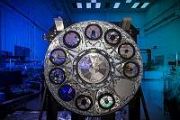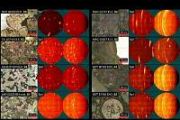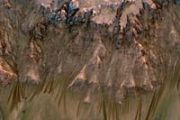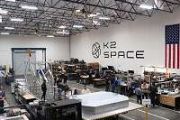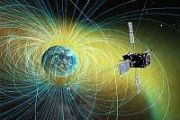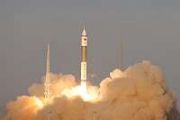
Copernical Team
Mars Express by the numbers
 Exactly two decades ago, on 2 June 2003, ESA's Mars Express orbiter launched and began its journey to the Red Planet - Europe's first ever mission to Mars. The spacecraft aimed to enter orbit around Mars (something it did in December of that year) and use its vantage point to study the martian atmosphere and climate, unravel the planet's structure, mineralogy and geology, and search for traces o
Exactly two decades ago, on 2 June 2003, ESA's Mars Express orbiter launched and began its journey to the Red Planet - Europe's first ever mission to Mars. The spacecraft aimed to enter orbit around Mars (something it did in December of that year) and use its vantage point to study the martian atmosphere and climate, unravel the planet's structure, mineralogy and geology, and search for traces o Asia's largest rocket engine test bench achieves dual 700-ton testing capacity
 In a significant milestone for Asian space exploration, the Tongchuan Test Center at the 165th Institute of the Sixth Academy of Aerospace Science and Technology Corporation has successfully executed a run on its No. 2 test bench on May 30.
This accomplishment comes on the heels of a successful test run of the No. 1 station test bench on April 24. Together, these developments confirm that
In a significant milestone for Asian space exploration, the Tongchuan Test Center at the 165th Institute of the Sixth Academy of Aerospace Science and Technology Corporation has successfully executed a run on its No. 2 test bench on May 30.
This accomplishment comes on the heels of a successful test run of the No. 1 station test bench on April 24. Together, these developments confirm that NASA marks significant milestone with successful SLS engine test
 NASA has recently made critical progress in the testing of its RS-25 engine, an integral component for upcoming Artemis missions to the Moon. On June 1st, the space agency successfully carried out the ninth in a series of critical engine hot fire tests at the Stennis Space Center in Mississippi.
This comes as part of NASA's ongoing efforts to certify new RS-25 engines for deep space missio
NASA has recently made critical progress in the testing of its RS-25 engine, an integral component for upcoming Artemis missions to the Moon. On June 1st, the space agency successfully carried out the ninth in a series of critical engine hot fire tests at the Stennis Space Center in Mississippi.
This comes as part of NASA's ongoing efforts to certify new RS-25 engines for deep space missio Sidus Space awarded additional SLS contracts
 Sidus Space (NASDAQ: SIDU) has received additional hardware manufacturing subcontracts to support NASA's Artemis Program and Space Launch System ("SLS") Manned Vehicle. Under the terms of the subcontract between Sidus Space and Craig Technologies, Sidus will be responsible for the fabrication of the Umbilical Quick Disconnects on the Universal Stage Adapter for the SLS. Dynetics (NYSE: LDOS), is
Sidus Space (NASDAQ: SIDU) has received additional hardware manufacturing subcontracts to support NASA's Artemis Program and Space Launch System ("SLS") Manned Vehicle. Under the terms of the subcontract between Sidus Space and Craig Technologies, Sidus will be responsible for the fabrication of the Umbilical Quick Disconnects on the Universal Stage Adapter for the SLS. Dynetics (NYSE: LDOS), is Dream Chaser comes to life
 In an important milestone for space travel technology, Sierra Space announced the successful power-up of its revolutionary Dream Chaser spaceplane. The test conducted by the company signifies the activation of the spacecraft's integrated systems and demonstrates the culmination of several years of meticulous engineering, design, and testing efforts.
The Dream Chaser, with its unique liftin
In an important milestone for space travel technology, Sierra Space announced the successful power-up of its revolutionary Dream Chaser spaceplane. The test conducted by the company signifies the activation of the spacecraft's integrated systems and demonstrates the culmination of several years of meticulous engineering, design, and testing efforts.
The Dream Chaser, with its unique liftin Weather delay moves SpaceX resupply mission to same day as Starlink launch
 Weather in Florida has delayed the launch of the SpaceX Dragon cargo mission, which is now slated to lift off Sunday, the same day the company also plans to send a new batch of Starlink satellites into orbit.
A SpaceX Falcon 9 rocket is now scheduled to launch at 12:12 p.m. Sunday to send an automated Dragon cargo capsule to the International Space Station.
However, the company s
Weather in Florida has delayed the launch of the SpaceX Dragon cargo mission, which is now slated to lift off Sunday, the same day the company also plans to send a new batch of Starlink satellites into orbit.
A SpaceX Falcon 9 rocket is now scheduled to launch at 12:12 p.m. Sunday to send an automated Dragon cargo capsule to the International Space Station.
However, the company s First-of-its-kind Mars livestream by ESA spacecraft interrupted at times by rain on Earth

A European spacecraft around Mars sent its first livestream from the red planet to Earth on Friday to mark the 20th anniversary of its launch, but rain in Spain interfered at times.
Study reveals understanding of a basic physical property of charged particles in microgravity
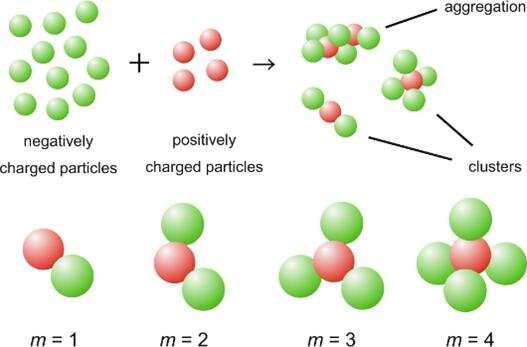
A study conducted by group of scientists from Nagoya City University (NCU), Japan Space Forum (JSF), Advance Engineering Services (AES), Japan Aerospace Exploration Agency (JAXA) and ANSTO has revealed a clustering of charged particles in the microgravity environment of International Space Station (ISS), with implications for the development of photonic materials, improved drugs, and a range of new and innovative materials that depend on the mixing of two or more charged particles.
The experimental study, which was published in npj Microgravity, and conducted on the ISS, determined how sub-micron sized charged colloidal particles interact in the presence and absence of Earth's gravity.
European Service Module-2 on the move
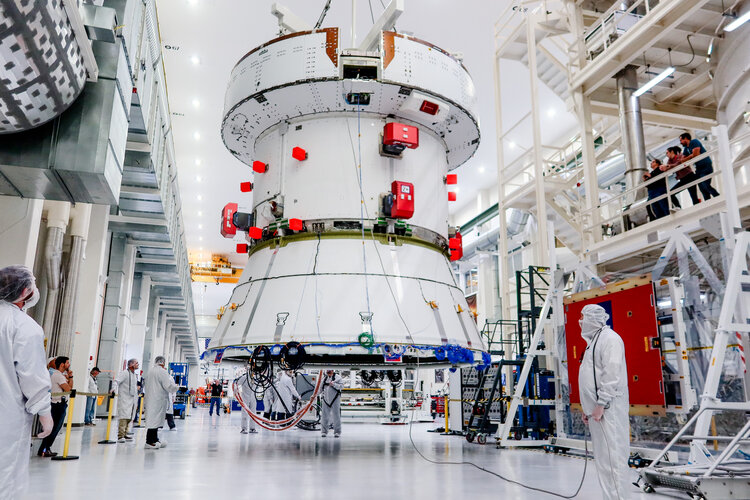 Image:
European Service Module-2 on the move
Image:
European Service Module-2 on the move Metal fuel for carbon-free energy on Earth and the Moon
 Everything burns. Given the right environment, all matter can burn by adding oxygen, but finding the right mix and generating enough heat makes some materials combust more easily than others. Researchers interested in knowing more about a type of fire called discrete burning used ESA's microgravity experiment facilities to investigate.
In a series of parabolic flights and on sounding rocke
Everything burns. Given the right environment, all matter can burn by adding oxygen, but finding the right mix and generating enough heat makes some materials combust more easily than others. Researchers interested in knowing more about a type of fire called discrete burning used ESA's microgravity experiment facilities to investigate.
In a series of parabolic flights and on sounding rocke 
















